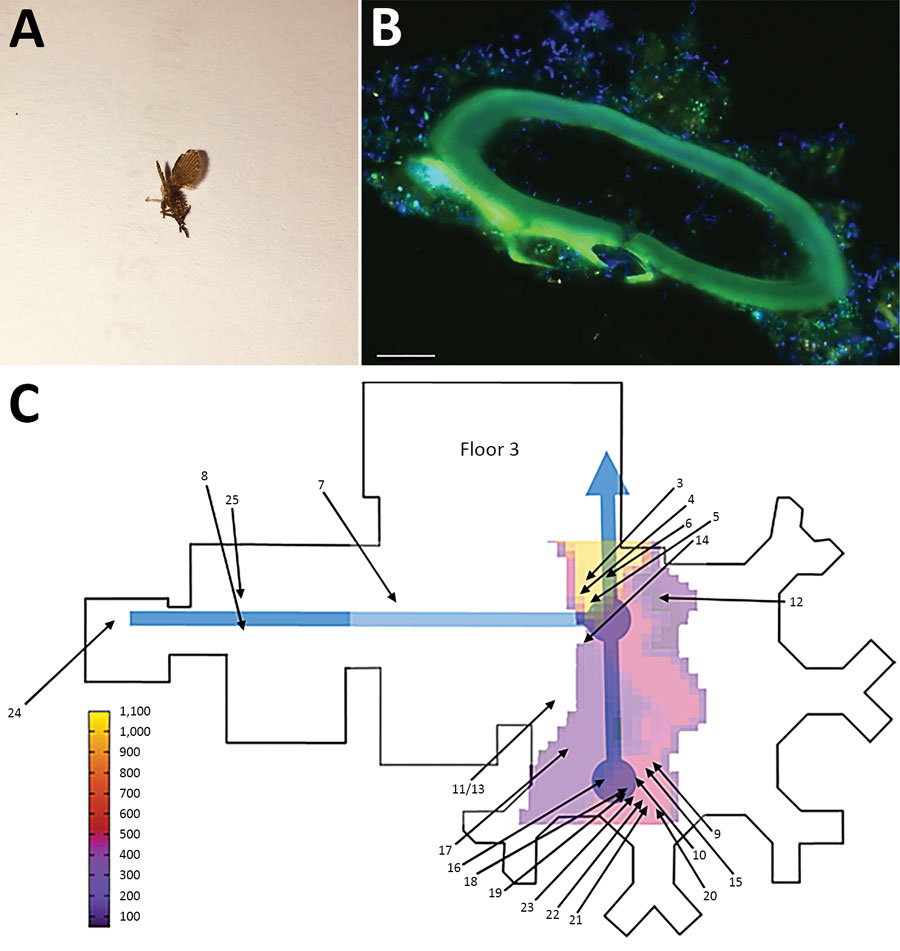Volume 26, Number 8—August 2020
Dispatch
Spread of Multidrug-Resistant Bacteria by Moth Flies from Hospital Waste Water System
Figure 1

Figure 1. Investigation of multidrug-resistant bacteria spread by moth flies via biofilm in a hospital, Germany. A) Magnified Clogmia albipunctata moth fly. The length of the corpus is 2.5 mm. B) Fluorescence in situ hybridization (FISH) from biofilm of a sewage pipe with a blind end in the operating room (OR) using the pan-bacterial FISH-probe EUB338 labeled with fluorescein isothiocyanate (green), Pseudomonas aeruginosa specific probe labeled with Cy3 (orange), and nucleic acid stain DAPI (Thermo Fisher Scientific, https://www.thermofisher.com/) (blue). The oval structure seen is consistent with an eggshell of Psychodidae, which is colonized by bacteria. C) Schematic map of floor −3 (topographically representative of the hospital building). Blue lines represent the main sewage pipe; heat map shows the frequency of C. albipunctata occurrence merged from all floors of the building; blue arrow indicates sewage system discharge from the hospital; black arrows indicate where moth flies were captured on level –3. Arrow numbers correspond to the numbers in Tables 1, 2; arrows 3–6 indicate the position of the closed OR. The gradients in the heat map (summarized over all floors) point to the yellow region, which is 1 floor above the central sewage collection point of the hospital. The central sewage lines were inspected; we found biofilm and multiple moth flies at all investigated points.
1These authors were co–principal investigators.